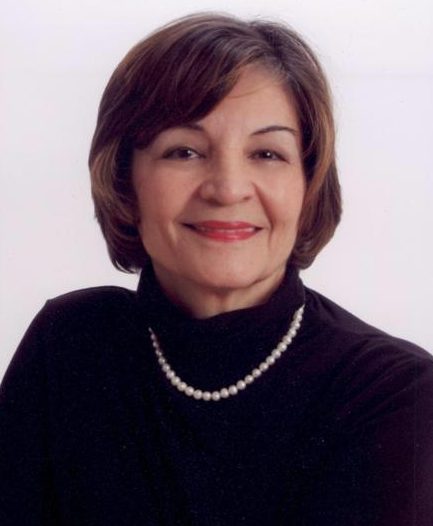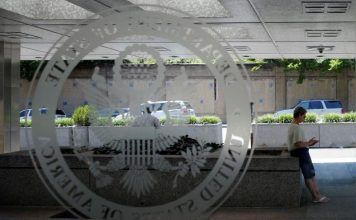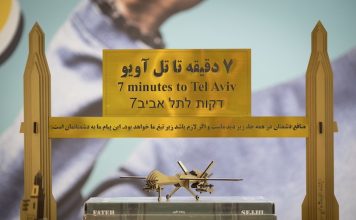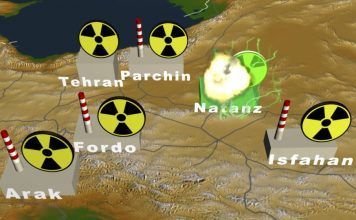Manda Zand was born in Boroujerd, the capital of Lorestan, in the western Zagros mountains. She traces her paternal lineage to the Zand tribe, historically famous for its courageous women who fought enemies alongside their husbands. Her paternal grandparents were secular Shi’a. Her maternal grandfather was also born into a Muslim family but, she recalls, converted to Zoroastrianism. Her maternal grandmother knew “the Torah, the Bible, and the Quran by heart. She was a Bahai.”

Manda followed in her father’s footsteps and became a civil servant in the 1970s. She left Iran four months after the Islamic revolution, eradicating its progressive and diverse culture and history. Away from Iran, she founded the Alliance of Iranian Women “to bring the voices of Iranian women living under Sharia law to Western democracies.” In her book, The Ladies’ Secret Society: History of the Courageous Women of Iran, Manda pays tribute to the Iranian women’s struggle for modernity and equal rights by recounting women activists’ accomplishments throughout Iran’s history.
Kayhan Life caught up with her in a recent conversation.
Your book recounts the stories of a multitude of remarkable women. How difficult was it to unearth their stories?
Although the internet and access to information should be easy, much information on Iran is hard to access, and much has unfortunately disappeared. That is why it took me about six years of following the issues to find specific people, or for them to find me. And, of course, I have to confess that I just stumbled on many of these women, who I had never heard of. If you follow history and dig into it, you will find unsung heroes.
The title of your book is the Ladies’ Secret Society. How much is known about this society, and why was it secret?
Women played an essential role in the Constitutional Revolution of 1889-1906. However, when the Revolution succeeded and Constitutional governance was finally attained, women remained under Sharia family law, as the property of men, in accordance with the demands of influential clerics.
Yet women were not about to succumb, nor were they going to rely on their men. Three years later, they organized their first national conference in Tehran and established “The Ladies’ Secret Society.” Why secret? The clerics’ weapon to keep them obedient was always to intimidate their men, threaten their businesses, their reputations and physical safety, and the security of their fathers, brothers, and husbands. So to protect their men and families, a decision was made to keep their organization, activism, and name a secret.
Your book refutes the notion that Iranian culture is traditionally patriarchal. Why?
Throughout our history, women have always been standing next to their men. Only since the 16th century and the domination of the Safavids, who brought Shiism to Iran, has the matriarchy of Iranian society been ignored, and replaced by the patriarchal Islamic culture.
Our roots lead directly to the Neolithic period in the the Zagros Mountains, where women were obeyed and worshiped as gods. These women gods were the founders of the Iranian culture of respect and care for all.
Iran, its people, and culture are diverse. How has this diversity reflected and affected the status of women? Have women been treated differently depending on their community and region?
Since the original Neolithic period, many peoples have come to the plateau called Iran. Some came in peace and brought their cultures, which joined together under the original Mother-God culture. Some occupied Iran by aggression and established dictatorial rule. However, Iran’s culture also reached out and adopted some of their cultures.
The name “Iran” was given to the land by the Zoroastrian Father-God, Aeyra Eyrene meaning the Land of Hospitable People. Some have translated the words as ‘Land of Honorable People.’ As hospitable or honorable people, we have always had open arms. One proof of that is our language, which has evolved from old Persian to Middle Persian. Then, modern Persian has adopted Arabic, Turkish, Mongolian, and Tartar words and vocabularies.
In 1936 Reza Shah, the founder of the Pahlavi dynasty, ordered the compulsory unveiling of women. Historians disagree on whether or not he had the support of women. What are your thoughts?
In answer to this question, I will tell you the story of Mrs. Fakhrafagh Parsa, one of the women in my book.
When Fakhrafagh Parsa began publishing a magazine called ‘Women’s’ World,’ the clerics demanded that she stop publication. She ignored them, and was exiled in Mashhad by the Qajar government, where she continued publishing and mailing her magazine. She continued publication once she was back in Tehran, where it had become even more popular. She was punished again and exiled a second time, this time to Qom, where she kept mailing out new issues of her magazines. In her memoirs, Fakhrafagh writes: “We spent the two years of exile in the city of Qom. When I arrived back in Tehran, I was gloriously welcomed by the people who were lined up on both sides of the streets.”
The government barred Fakhrafagh from writing, yet she continued her activism. She immediately joined Ms. Mohtaram Eskandary and the Association of Patriotic Women of Iran. In an interview, Fakhrafagh said, “I immediately joined the women of APWI and began to write letters about the inhumane status of the women of Iran. We delivered the letters to Minister Teimoortash of the royal court of Ahmad Shah Qajar. I even went to meet with his wife, but we never heard from them afterward.”
When Parliament removed the Qajar dynasty from the throne in 1925, and Reza Khan Pahlavi became the Shah of Iran, women found a supporter who would stand by them. Fakhrafagh Parsa wrote: “One day in 1935, we stood on the street for hours until we saw Reza Shah’s car approaching. Raising our hands holding the envelope, we stood in front of his car. He stopped the car, and I stepped forward towards the open car window and said, ‘Your Majesty, I have a letter from the Association of Patriotic Women of Iran.’ He said thank you and took the letter. A few days later, we received his one-line response: “You will get your wishes, give me a little more time.’
Two months later, his Majesty Reza Shah Pahlavi ordered the implementation of the law passed by the Majles, or parliament. In 1928, he enforced the removal of the hijab from the lives of the women of Iran. That was the day we got one of our wishes.
Fakhrafagh Parsa began to publish her new magazine, Awlam’eh Zanan (‘Women’s Universe’), with the support of the graduates of the American girls’ school. Women’s Universe was the first real magazine published by women activists in a standard magazine size, with 40 pages of content and elaborate editorials advocating women’s progress.








Dear lady
Have read your book and noticed that your forgot the most important person in your book .
Parvin ghaffari (blind)